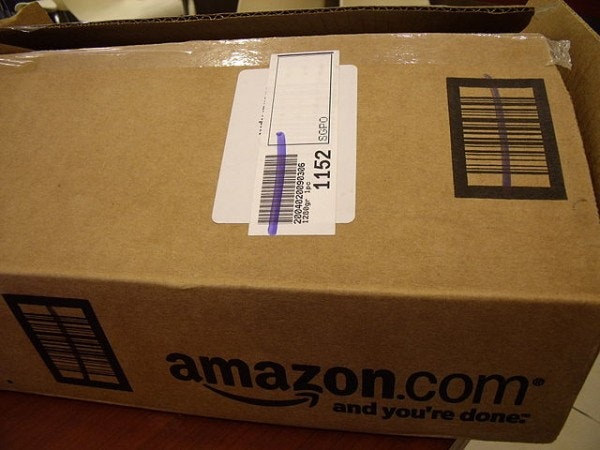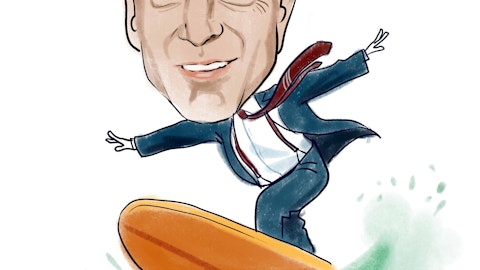Always one to go low, Amazon.com, Inc. (NASDAQ:AMZN) may be about to go even lower with its popular Kindle Fire tablet. TechCrunch is reporting that the e-tail juggernaut is preparing to launch a $99 Kindle Fire with a seven-inch display.

Amazon is reportedly going with a 1280 x 800 resolution along with a processor from Texas Instruments Incorporated (NASDAQ:TXN) . If those specs sound familiar, that’s because the current $199 Kindle Fire HD bears the same characteristics. The company continues to put pressure on Apple Inc. (NASDAQ:AAPL)‘s iPad mini, and also recently dropped the price of its 8.9-inch Kindle Fire HD, which is now $60 cheaper than Apple’s smaller model. A possible $99 model could potentially add even more heat, costing less than a third of an entry-level iPad mini.
Here, have some cost savings
When Amazon.com, Inc. (NASDAQ:AMZN) reduced the price of its bigger tablet, the company said that it was passing along cost savings that have materialized since the initial launch as Amazon increased production volumes. The possibility of a $99 Kindle Fire would follow in those same footsteps, and also implies that costs have come down significantly since launch.
In November, IHS iSuppli estimated that Amazon’s component costs including manufacturing totaled $174, so costs must have had to come down significantly for Amazon to make this move. The largest component for any tablet in general is always the display and touchscreen assembly ($64 of iSuppli’s November estimate). That was five months ago, and any cost reductions related to the display would go a long way in facilitating a retail price drop.
Going with TI would show how cozy the pair is, since TI publicly exited the mobile chip sector last year. TI processors have powered every Kindle Fire to date, and Amazon.com, Inc. (NASDAQ:AMZN) is undoubtedly the biggest buyer of its OMAP chips.
IDC Research Director Tom Mainelli said the $99 price point seems within reach for Amazon.com, Inc. (NASDAQ:AMZN), since the company does have the required scale to make it worthwhile.
Stuck in the middle with you
With Google Inc (NASDAQ:GOOG)‘s upcoming second-generation Nexus 7 expected within a matter of months, a $99 Kindle Fire would also be a viable threat to the search giant if it were still targeting the original $199 price point. Google similarly pursues a strategy of little to no hardware margins for most of its devices (other than its new high-end Chromebook Pixel), so the company can also be expected to pass along cost savings to consumers wherever possible.
Although Google has also been following Apple’s lead with pushing higher-resolution displays, such as the one found in the larger Nexus 10 and the aforementioned Chromebook Pixel. If the search giant opts for a sharper display in the second-generation Nexus 7, that’s going to add a lot to the bill of materials and may prohibit a more aggressive price point. On the other hand, a higher-resolution Nexus 7 would also be positioned higher than a $99 tablet.
There aren’t a whole lot of rumors about that device yet other than speculation that Google is going with a QUALCOMM, Inc. (NASDAQ:QCOM) Snapdragon processor instead of an NVIDIA Corporation (NASDAQ:NVDA) one.
Android rises
IDC recently predicted that Apple’s tablet market share would slip in the coming years to “just” 43.5% by 2017. At the same time, Android is expected to overtake iOS this year at nearly half the market. Low-cost devices with smaller form factors are expected to be the primary drivers of increased uptake among consumers, with a total of 190.9 million tablets expected to ship this year worldwide.
While that sparked some initial negativity around Apple, the pessimism is slightly misplaced because we’re still talking about one company selling 88 million tablets (with actual hardware margins) alone.
Although Amazon’s Android has gone rogue, it still gets bundled into the broader Android category. Still, a $99 Kindle Fire is even deeper into impulse-buy territory.
The article Amazon.com’s Race to the Bottom originally appeared on Fool.com and is written by Reuben Evan Niu.
Fool contributor Evan Niu, CFA owns shares of Apple and Qualcomm. The Motley Fool recommends Amazon.com, Apple, Google, and NVIDIA. It owns shares of Amazon.com, Apple, Google, and Qualcomm.
Copyright © 1995 – 2013 The Motley Fool, LLC. All rights reserved. The Motley Fool has a disclosure policy.


